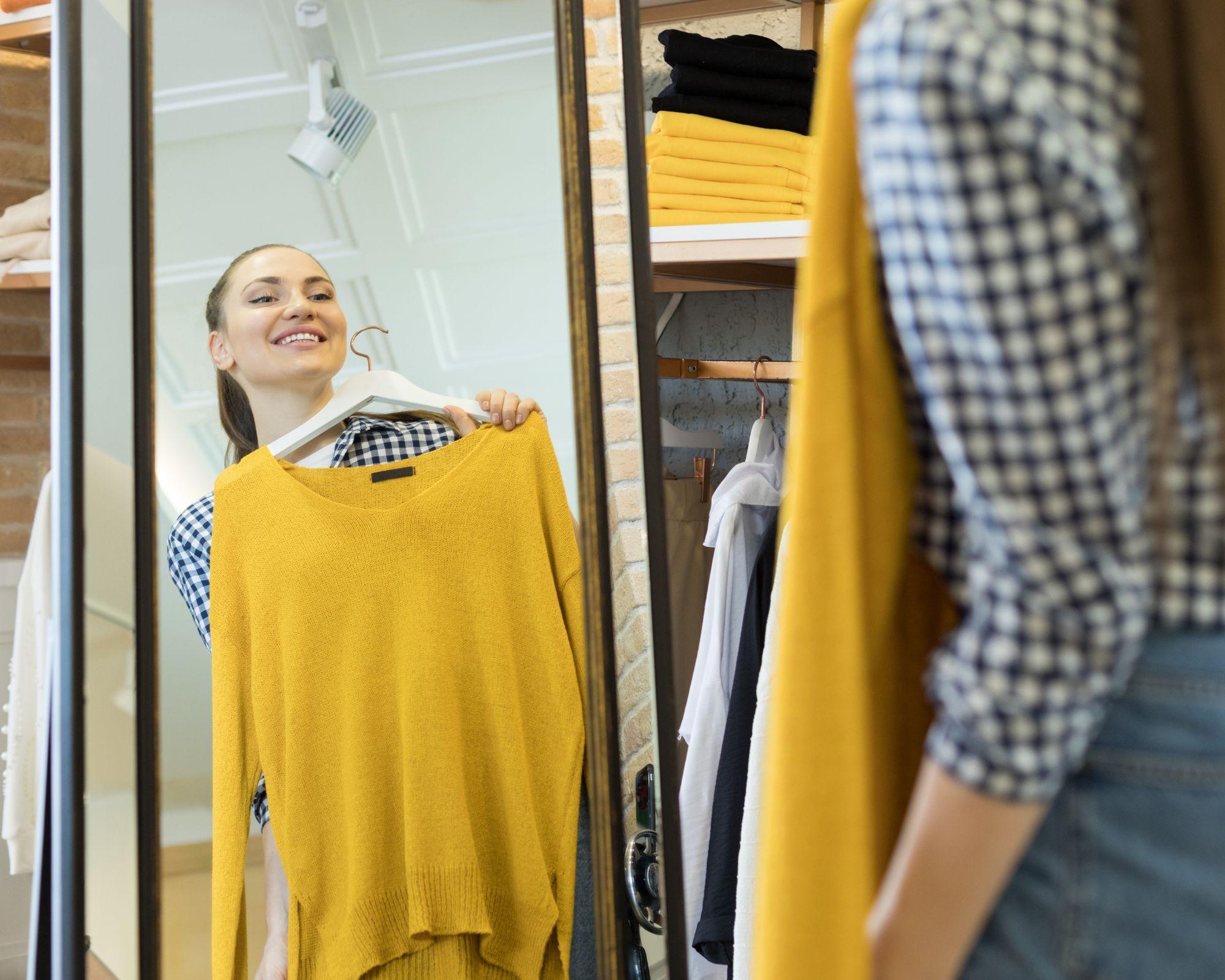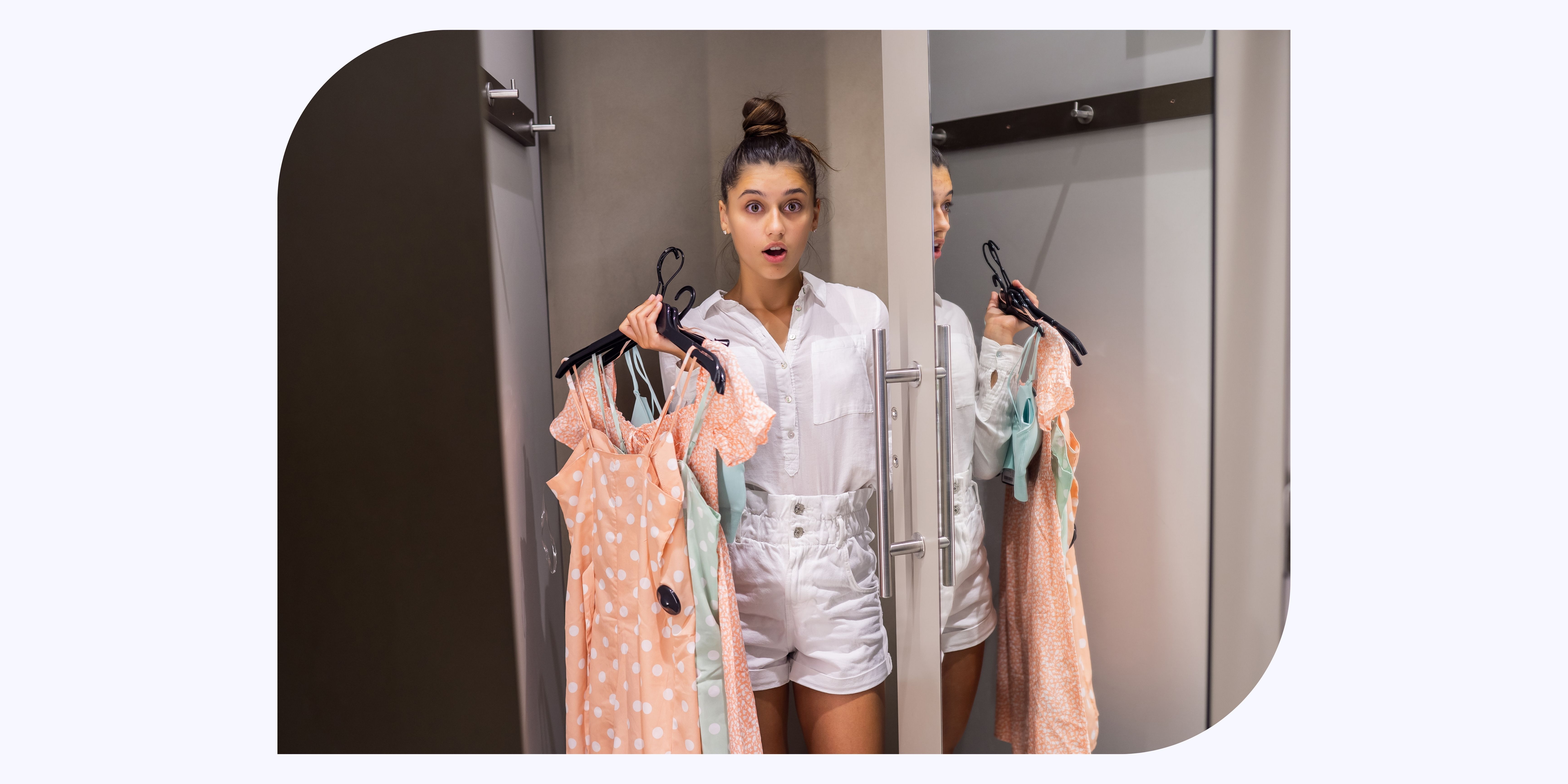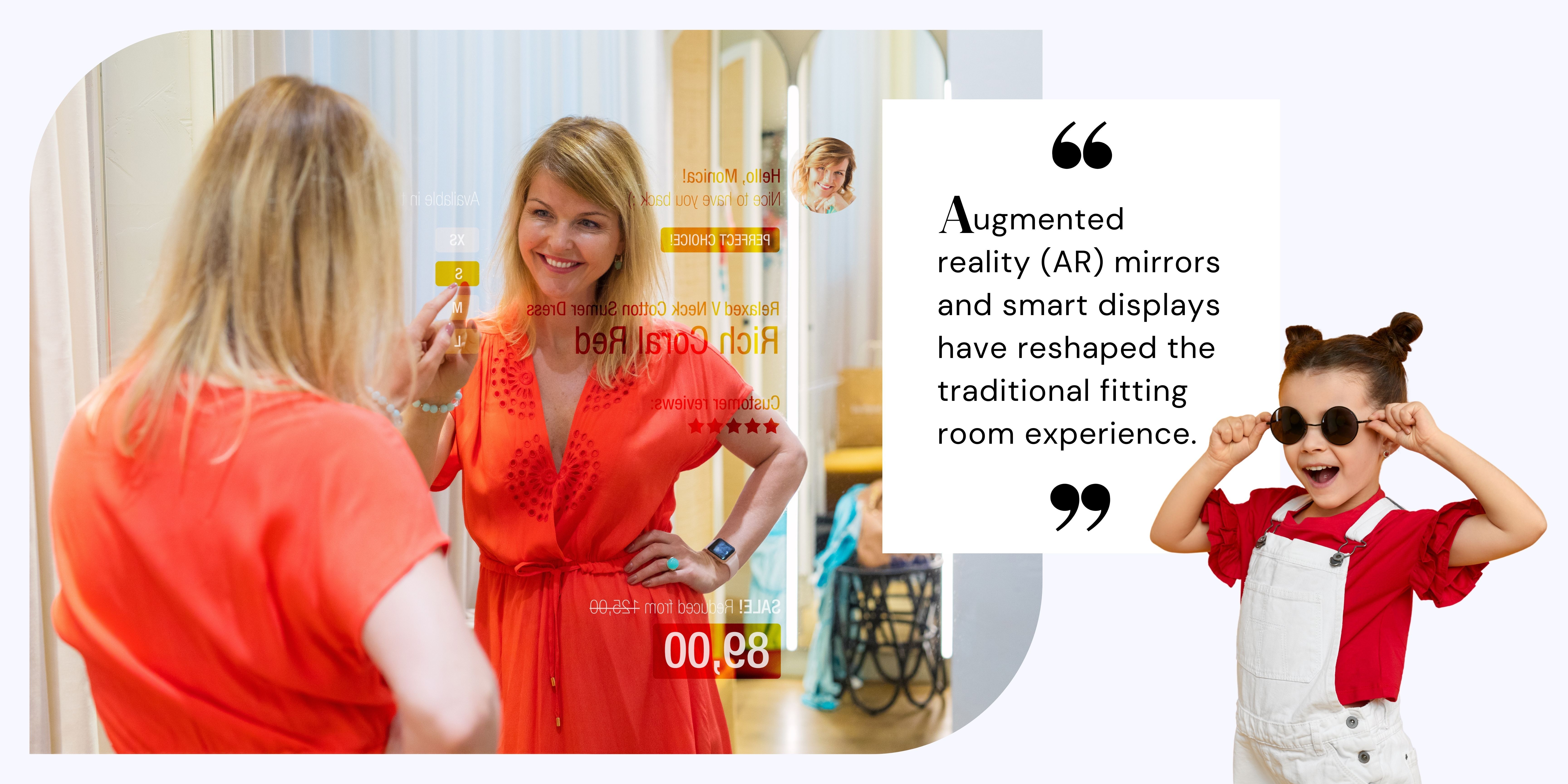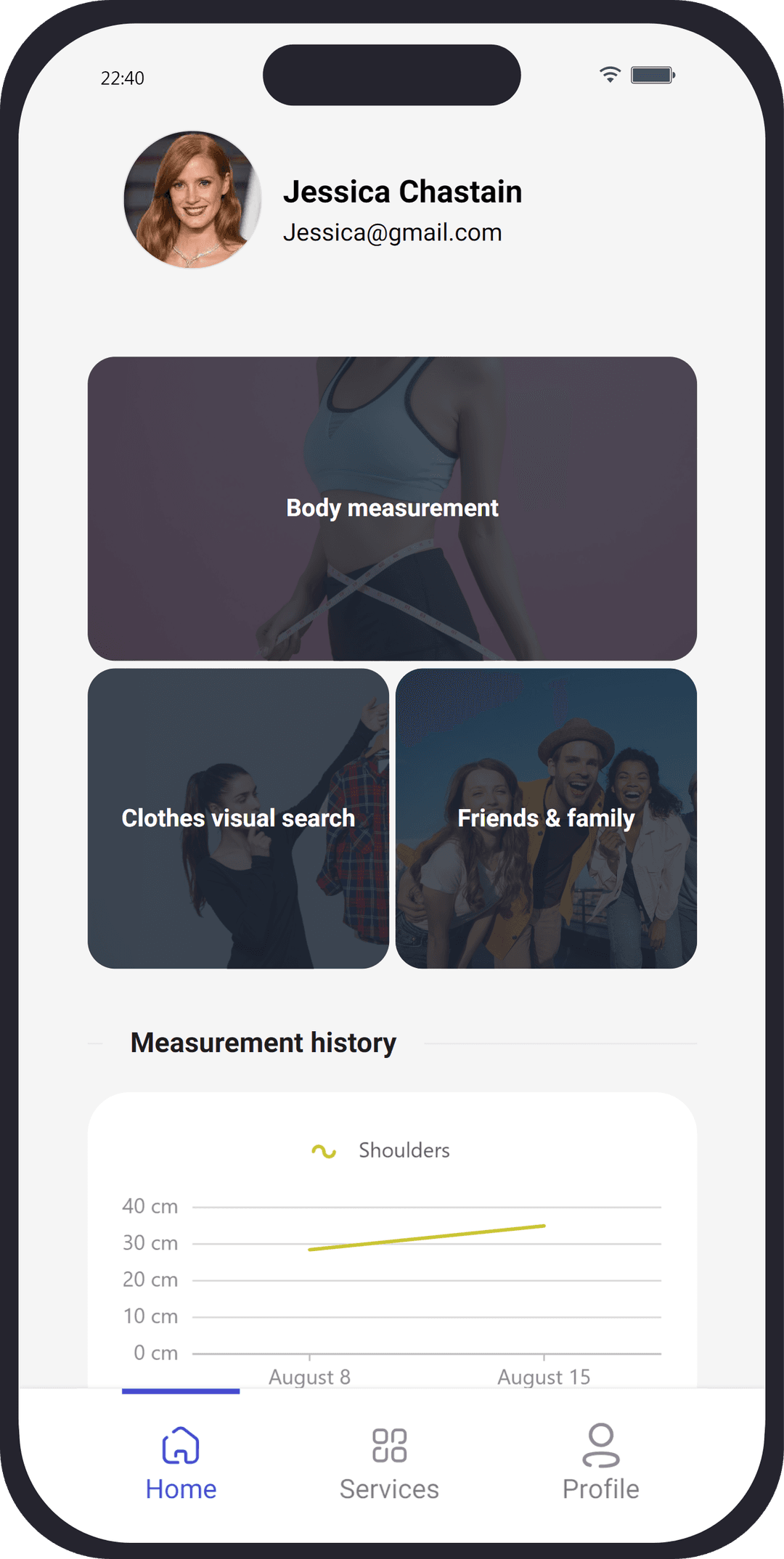
9 Fitting Room Challenges In Stores
Fitting room challenges in stores can make or break the shopping experience. Long queues, inconsistent sizing across different brands, and poor lighting can hinder the joy of trying on new clothes. These issues often lead to frustration, impacting purchasing decisions and customer satisfaction. Exploring these challenges reveals insights into the consumer experience, shedding light on the evolving retail landscape. To dive deeper into how these challenges are reshaping the future of shopping, head to our blog for an in-depth exploration.
A Very Short History Of Fitting Rooms
The inception of fitting rooms in retail stores was a response to the need for a dedicated space where customers could try on clothing items for size and style before making a purchase. Before we delve into the fitting room challenges in stores, first we take a glance at the short history of fitting rooms and how they come up in every stores right now. Fitting emergence closely coincided with the rise and development of department stores in the late 19th and early 20th centuries, with the concept having deeper roots in the changing landscape of the retail experience during the Industrial Revolution.
Previously, shopping predominantly involved bargaining and haggling over prices, and clothes were usually bought without prior fitting. However, with the advent of fixed prices and more standardized merchandise, customers found the need to gauge the fit and style of the garments before purchasing. This transition marked the early seeds of the modern fitting room.
The specific origin of the first fitting room isn’t precisely documented, but there’s mention of their spread coinciding with the establishment of department stores. The novel "Au Bonheur des Dames" in 1883 by Émile Zola detailed the existence of these rooms, noting that they were once forbidden to men but later became accessible to all genders by the early 20th century. Their emergence gained momentum particularly in Europe and the United States during the late 19th and early 20th centuries.
Notably, individuals such as Aristide Boucicaut, the founder of Le Bon Marché in Paris, and Harry Gordon Selfridge, the American-British retail magnate behind Selfridges in London, played significant roles in revolutionizing the retail experience and solving some of the Fitting room challenges in stores. While they might not have been the inventors of fitting rooms, their innovative approach to department store experiences significantly influenced modern concepts of retail displays, pricing, and private spaces for customers to try on clothes.
By the early 20th century, stores like Selfridges in London and Bon Marché in Paris led the charge in modernizing the shopping experience. They introduced new concepts like fixed pricing and organized product displays, followed by the provision of dedicated spaces for trying on clothes before purchase. Their pioneering initiatives set a standard for the modern shopping experience.
fitting room challenges in stores became an integral part of the retail strategy, aiming to enhance the shopping experience, increase customer satisfaction, and thereby encourage more purchases. The focus was to enable customers to evaluate the fit, style, and comfort of clothing items, thereby reducing the rate of returns and boosting overall satisfaction.
The gradual establishment of private spaces for trying on clothes significantly contributed to the growth of retail stores, indicating a deeper connection between customer convenience and sales. This fundamental shift marked the emergence of the modern retail experience and underlined the necessity of offering customers a more comprehensive and personalized shopping journey.
Currently, fitting rooms play a vital role in the retail experience, influencing customer satisfaction, buying decisions, and overall shopping convenience. The importance of these spaces lies in their ability to enhance the shopping journey, ensuring that customers find suitable and comfortable clothing that aligns with their preferences. These spaces offer privacy, enabling customers to assess the fit, style, and overall appearance of garments before making a purchase. Besides, while the significance of fitting rooms in the market is undeniable, it's crucial to acknowledge the challenges that come with these integral spaces. Despite their pivotal role, fitting rooms present a host of common issues and in other words, fitting room challenges in stores that shoppers encounter.
Download the Shaku app today and discover a unique and convenient online shopping experience!

Fitting Room Challenges In Stores
There are several fitting room challenges in stores that impact the customer experience. From issues regarding privacy, cleanliness, and safety to historical quirks, these challenges have evolved as the retail landscape changed. Let's dive into these problems and their historical context.
Privacy Concerns
One primary issue in fitting room challenges in stores relates to privacy. Despite being spaces designed for trying on clothes in private, issues with inadequate door latches, broken locks, or gaps around the doors can compromise privacy. Customers often express discomfort due to the fear of being watched or barged in on. This problem is a recurring one and has historical roots. Earlier fitting rooms often lacked the privacy measures that modern ones possess, leading to a less secure and private experience for customers.
Hygiene and Cleanliness
Maintaining cleanliness in fitting rooms is another fitting room challenges in stores. Customers are usually wary of trying on clothes due to concerns about cleanliness and hygiene, especially in shared or busy retail spaces. This is a relatively modern concern, as historically, hygiene standards in fitting rooms weren't as stringent. Over time, as people became more health-conscious, this issue gained prominence. Retailers responded by improving cleaning standards and introducing policies to ensure garments were properly sanitized before being returned to the shelves.
Boost your business with Shaku!
Space and Comfort
One of the fitting room challenges in stores is related to suffering from inadequate space and uncomfortable conditions. Customers might face difficulties changing in tight or poorly designed rooms. In the past, the design of fitting rooms was less customer-oriented, lacking consideration for comfort and ample space. This issue was addressed over time as retailers adapted to customer preferences, expanding the size and amenities within these spaces.
Historical Connection
An interesting historical fact is the establishment of the "fitting room attendants" in high-end department stores in the early 20th century. These attendants, typically women, were tasked with overseeing the fitting room areas. Their role extended beyond merely guarding the space; they were trained to offer fashion advice, assist customers, and maintain the room’s tidiness. This historical touch sheds light on the evolution of customer service within fitting rooms.
Safety Issues
The safety of customers is another significant concern related to fitting room challenges in stores. Instances of theft or customers feeling unsafe in secluded or less frequented parts of the store are pertinent issues. Historically, these issues were amplified when fitting rooms lacked appropriate surveillance or monitoring systems. Over time, retailers incorporated better security measures, including surveillance cameras and alarms, ensuring the safety of both customers and merchandise.
Customer Service Challenges
Poor customer service within fitting rooms can also be problematic and cause some of the main fitting room challenges in stores. Issues like the lack of available staff, untrained attendants, or lack of assistance for customers have been reported. Historically, the development of customer service within fitting rooms was rather sporadic. However, department stores in the early 20th century sought to enhance the customer experience by employing dedicated attendants.
Throughout history, fitting rooms have evolved to address these common problems. The concerns identified today have their roots in earlier practices and challenges. The gradual shift in the design, management, and maintenance of these spaces has greatly influenced the shopping experience, emphasizing the importance of customer comfort, privacy, and security.
Alongside the historical context, several everyday problems persist in fitting rooms, affecting the shopping experience and customer satisfaction.
Implement Shaku on your business website and revolutionize your website conversions instantly.
Wait Times and Accessibility
Long lines or wait times for fitting rooms are another problem from the list of fitting room challenges in stores, especially during peak shopping hours or sales events. The limited number of fitting rooms compared to the number of customers wanting to use them often leads to queues, causing frustration. Accessibility is another issue for differently-abled individuals who might find the layout or dimensions of the rooms challenging.
Inconsistent Sizing
Inaccurate or inconsistent garment sizes across brands can be a source of immense frustration for customers. When different brands or even various lines within the same brand label a size differently, it complicates the shopping process. Even within the same brand, sizing variations can lead to a customer trying on multiple sizes, adding to the time spent in fitting rooms.
Poor Lighting and Mirrors
Dim or unflattering lighting in fitting rooms is a constant complaint and is considered one of the fitting room challenges in stores. Inaccurate or inadequate lighting can misrepresent the color and fit of the clothes. Similarly, unflattering or distorting mirrors can be a problem, giving customers an unrealistic reflection and leading to incorrect purchasing decisions.
Uncomfortable Temperature and Lack of Amenities
Temperature control is a common issue in fitting rooms. Uncomfortably warm or cold rooms affect the overall comfort and might influence the customer’s decision. Moreover, the absence of amenities such as seating, hooks, or shelves for personal belongings can add to the inconvenience experienced by customers.
Addressing these everyday problems involves understanding customer needs, enhancing service quality, and developing fitting rooms that cater to diverse preferences. The historical context of fitting rooms offers a valuable insight into the evolution of retail and the changing dynamics between retailers and customers, paving the way for improving the overall shopping experience.
The Future Of Fitting Room
The evolution of fitting rooms has reached an exciting phase with the advent of technological advancements that are transforming the very essence of trying on clothes. Innovations like augmented reality (AR) mirrors and smart displays have reshaped the traditional fitting room experience, offering a glimpse into the future of fashion retail. These novel approaches, integrating technology to provide customers with a more interactive, efficient, and personalized shopping journey, mark a pivotal shift in how we experience trying on new garments.
At the forefront of this technological revolution is the integration of Artificial Intelligence (AI) in the fashion industry, particularly in virtual fitting rooms. Leveraging AI, these rooms offer not just a simulation of trying on different clothing items but can also suggest complementary pieces, styles, and even better-fitting options based on a customer’s body type and preferences. This innovative blend of AI and virtual fitting rooms ensures a more tailored and efficient shopping experience for the modern consumer, reshaping how we explore fashion and make purchasing decisions.
But perhaps the most revolutionary development in recent times is the emergence of virtual fitting rooms. Utilizing cutting-edge technology, these virtual fitting rooms allow individuals to 'try on' different clothing items in a matter of seconds. Using just their smartphones and the power of augmented reality, shoppers can virtually don a variety of outfits, experimenting with styles, colors, and sizes without physically trying them on. It’s a turning point for the fashion industry, enabling customers to experience clothes virtually before making a purchase. This not only enhances convenience but also reduces the need for physical spaces, cutting down on store traffic and increasing efficiency. The fashion retail landscape is at the cusp of a significant transformation, and virtual fitting rooms, powered by AI, are leading this revolution.
For a more in-depth look at these incredible advancements and their influence on the future of fashion, explore our blog. Learn how AI-powered virtual fitting rooms are redefining the way we shop for clothes and shaping the next phase of the fashion industry's journey.
The significance of fitting rooms is particularly notable in how they bridge the gap between traditional brick-and-mortar stores and online shopping. They provide a hands-on experience that digital shopping often lacks. Customers can see, touch, and wear garments to assess not just their size but also their comfort, texture, and how they complement their personal style.
Several retailers have revolutionized the concept of fitting rooms, transforming them into unique and unusual spaces that provide more than just privacy. Some innovative examples include:

Augmented Reality Fitting Rooms
Some prominent retail stores have integrated advanced technology into their fitting rooms, enhancing the traditional trying-on experience. A notable example is the fashion brand Burberry, which introduced AR mirrors in certain stores. Customers could view themselves wearing a particular garment through these mirrors without actually trying the items on. It provided a novel way to try various styles and sizes and helped bridge the online and offline shopping experiences.
Smart Fitting Rooms To Overcome Fitting Room Challenges in Stores
Rebecca Minkoff, a luxury fashion brand, introduced smart dressing rooms in their physical stores. Their interactive mirrors enable customers to request different sizes or colors without leaving the room. The mirrors also display styling suggestions and complementary items that go with the piece the customer is trying. By creating a personalized experience, it fosters customer engagement and assists in decision-making.
Personalization and Customization
Levi's has embarked on a journey to personalize their fitting rooms. By allowing customers to control the ambiance, such as lighting and music, they enable a more tailored experience. This customization not only allows the customer to feel more comfortable but also helps the brand align with the individual's preferences, enhancing customer satisfaction.
Themed Fitting Rooms
Retailers like H&M often employ this approach during holiday seasons or special events. For instance, during Halloween, they might theme their fitting rooms with
spooky decorations and specific lighting. The goal is to create a fun and immersive experience that complements the shopping journey. This not only sets a festive mood but also makes the shopping experience memorable and enjoyable.
Comfort-Centric Fitting Rooms
Today comfort-focused fitting rooms, Nordstrom has been a frontrunner. Their fitting rooms aren't just a space to try on clothes but offer plush seating, refreshments, and pleasant music or aromas. This experience aims to make customers feel pampered and relaxed, fostering a positive association with the brand and promoting longer stays in-store.
These innovative fitting room designs showcase how technology, personalization, and ambiance can revolutionize the shopping journey. Each of these approaches aims to make the fitting room experience unique, more customer-centric, and memorable, ultimately enhancing the overall shopping experience for consumers.
Talk with our experts to help you get started.
FAQ
Why are fitting rooms often crowded?
- Fitting rooms can get crowded due to limited space, long queues, and the time it takes for each customer to try on clothes.
How can stores reduce fitting room wait times?
- Stores can reduce wait times by optimizing fitting room layouts, employing more staff during peak hours, and implementing virtual try-on technology.
What is virtual try-on technology?
- Virtual try-on technology allows customers to see how clothes will look on them using digital images or augmented reality, reducing the need for physical try-ons.
How can AI help with fitting room challenges?
- AI can help by analyzing customer traffic patterns to optimize store layouts, predicting peak times for fitting room usage, and offering personalized recommendations to reduce the number of items customers try on.
Are there alternatives to traditional fitting rooms?
- Yes, alternatives include self-service kiosks where customers can scan items to see how they would look on a digital avatar, or using augmented reality apps on smartphones to visualize clothing.
What can customers do to make fitting room visits smoother?
- Customers can help by limiting the number of items they bring to try on, using virtual try-on tools when available, and being mindful of other shoppers waiting to use the fitting rooms.
Conclusion
Fitting rooms, from their early inception to their modern advancements, stand as pivotal spaces in the retail landscape. Evolving from basic enclosed spaces for trying on clothes, these rooms have undergone significant innovation, embracing technology, personalization, and themed designs. However, they're not devoid of challenges—long queues, inconsistent sizes, and lighting issues persist. These difficulties often impact the shopping experience, influencing consumer decisions.
Today, the shopping landscape has transformed. With the ease and convenience of online shopping, consumers can browse, select, and virtually try on clothing from the comfort of their homes. The use of augmented reality and various mobile applications allows shoppers to visualize how an item might look and fit without physically being in a fitting room. This shift in the retail landscape suggests a new era where individuals have more control over their shopping experience, avoiding the inconveniences commonly associated with traditional fitting rooms.
In conclusion, while fitting rooms have long been integral to the shopping process, the rise of online shopping and technological innovations have introduced new, more convenient ways of trying on and purchasing clothing and new challenges as well. As fitting room challenges in stores continue to be one of the most problematic issue, AI can help us find new ways instead of old ones. With AR tools and apps allowing for virtual try-ons, the traditional limitations and challenges of fitting rooms are being redefined, providing consumers with greater flexibility and a more seamless shopping experience.



